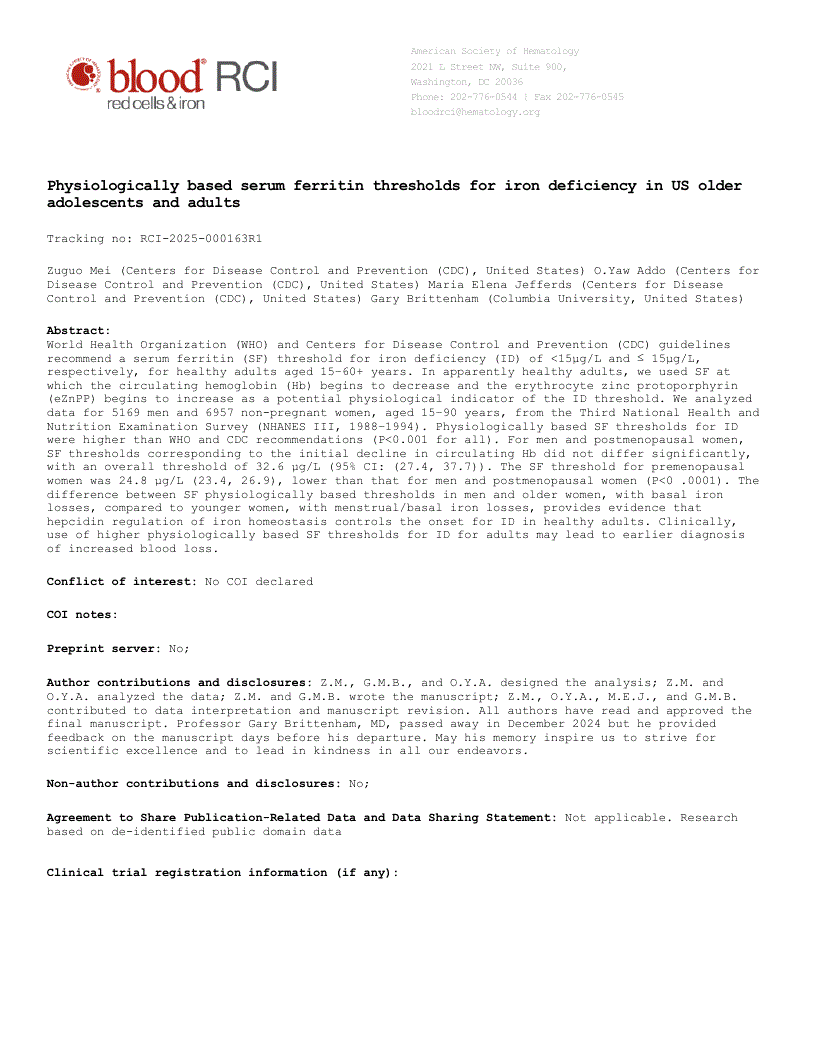Key Points
Using physiological based approach, we find ferritin threshold of 33 μg/L in both men and postmenopausal women for iron deficiency.
Abstract
World Health Organization (WHO) and Centers for Disease Control and Prevention (CDC) guidelines recommend a serum ferritin (SF) threshold for iron deficiency (ID) of <15μg/L and ≤ 15μg/L, respectively, for healthy adults aged 15–60+ years. In apparently healthy adults, we used SF at which the circulating hemoglobin (Hb) begins to decrease and the erythrocyte zinc protoporphyrin (eZnPP) begins to increase as a potential physiological indicator of the ID threshold. We analyzed data for 5169 men and 6957 non-pregnant women, aged 15–90 years, from the Third National Health and Nutrition Examination Survey (NHANES III, 1988–1994). Physiologically based SF thresholds for ID were higher than WHO and CDC recommendations (P<0.001 for all). For men and postmenopausal women, SF thresholds corresponding to the initial decline in circulating Hb did not differ significantly, with an overall threshold of 32.6 μg/L (95% CI: (27.4, 37.7)). The SF threshold for premenopausal women was 24.8 μg/L (23.4, 26.9), lower than that for men and postmenopausal women (P<0 .0001). The difference between SF physiologically based thresholds in men and older women, with basal iron losses, compared to younger women, with menstrual/basal iron losses, provides evidence that hepcidin regulation of iron homeostasis controls the onset for ID in healthy adults. Clinically, use of higher physiologically based SF thresholds for ID for adults may lead to earlier diagnosis of increased blood loss.
Author notes
Deceased, December 2024.
Source ofsupport for the work: This study involved no external funding.
Conflict of Interest and Funding Disclosure
The authors have nothing to disclose and have no potential conflict of interest, real or perceived, to report. No one involved in the production of the manuscript received any honorarium, grant, or other form of payment.
The findings and conclusions in this report are those of the authors and do not necessarily represent the official position of Centers for Disease Control and Prevention.

